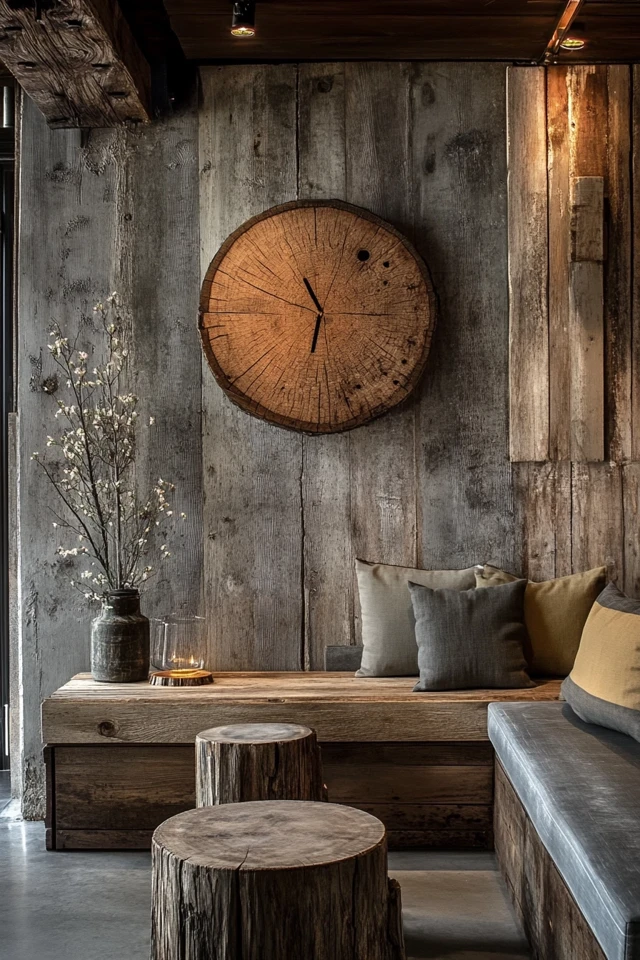Introduction
The first time I worked with reclaimed wood was during a project for a loft apartment in a historic warehouse building. The clients, a young couple with an eye for industrial design, wanted to honor the building’s heritage while creating a warm, inviting space. When I suggested incorporating reclaimed wood into the design, they were intrigued. We ended up sourcing weathered barn wood for a feature wall and old floor planks for a dining table. The transformation was breathtaking—it felt like the soul of the building had been preserved and brought to life. Since then, I’ve fallen in love with the rustic-meets-industrial aesthetic that reclaimed wood offers.
Reclaimed wood is one of the most versatile materials in interior design, especially when you’re aiming for a rustic industrial look. It brings a sense of history, character, and sustainability to a space. Whether it’s used for furniture, walls, or accents, reclaimed wood pairs perfectly with the rugged textures of industrial design—think exposed brick, steel beams, and concrete floors.
In this post, we’ll explore how to create a rustic industrial look using reclaimed wood. From choosing the right pieces to balancing textures and finishes, I’ll share tips and ideas to help you achieve a space that feels both authentic and stylish.
Why Reclaimed Wood is Perfect for Rustic Industrial Design
Sustainability with Style
Using reclaimed wood is not only an environmentally friendly choice but also a design-savvy one. Each piece of wood tells a story, with natural imperfections like knots, nail holes, and weathered textures adding depth and character to your space.
Warmth Amid Raw Elements
Industrial design can sometimes feel a bit cold, with its emphasis on metal, glass, and concrete. Reclaimed wood softens this aesthetic, introducing warmth and texture that make a space feel more lived-in and inviting.
Timeless Appeal
Reclaimed wood transcends trends. Its timeless charm ensures that your space will feel stylish and relevant for years to come. Plus, it blends seamlessly with other elements of rustic industrial design, such as aged leather, vintage lighting, and metal accents.
Ways to Incorporate Reclaimed Wood into Your Rustic Industrial Design
1. Feature Walls
A reclaimed wood feature wall can instantly become the focal point of a room. Whether you install horizontal planks for a classic look or arrange them in a herringbone pattern for added flair, the natural texture and color variations will make your wall a conversation piece.
Tip: Pair your wood wall with exposed brick or concrete for a balanced industrial aesthetic.
2. Furniture with History
Reclaimed wood is ideal for furniture pieces like dining tables, coffee tables, and shelving units. Its durability and unique character make it a standout choice.
- Dining Tables: A reclaimed wood dining table, with its weathered surface and sturdy construction, can anchor your dining room.
- Shelving: Use reclaimed wood planks with industrial pipe brackets for a practical yet stylish storage solution.
3. Ceiling Beams
Exposed wooden beams add architectural interest and warmth to industrial spaces. Reclaimed wood beams, with their natural imperfections, enhance the rustic vibe while complementing steel or concrete elements.
4. Kitchen Accents
Reclaimed wood can bring charm to an industrial-style kitchen. Consider using it for open shelving, a butcher block countertop, or even a rustic kitchen island.
5. Flooring
Reclaimed wood flooring is a stunning choice for adding warmth to a space. Its aged patina and weathered textures create a lived-in look that’s perfect for rustic industrial interiors.
Balancing Textures in Rustic Industrial Design
Pairing Wood with Metal
One of the hallmarks of rustic industrial design is the interplay of wood and metal. To achieve this balance, pair reclaimed wood furniture or accents with industrial-style elements like steel chairs, metal light fixtures, or iron shelving.
Contrasting with Smooth Surfaces
Reclaimed wood’s rough texture stands out beautifully against smooth surfaces. For example, a reclaimed wood coffee table paired with a sleek leather sofa creates a harmonious contrast.
Incorporating Natural Textiles
Introduce textiles like jute rugs, linen curtains, or wool throws to soften the overall look. These materials complement the rustic feel of reclaimed wood while adding layers of coziness.
Picture Gallery
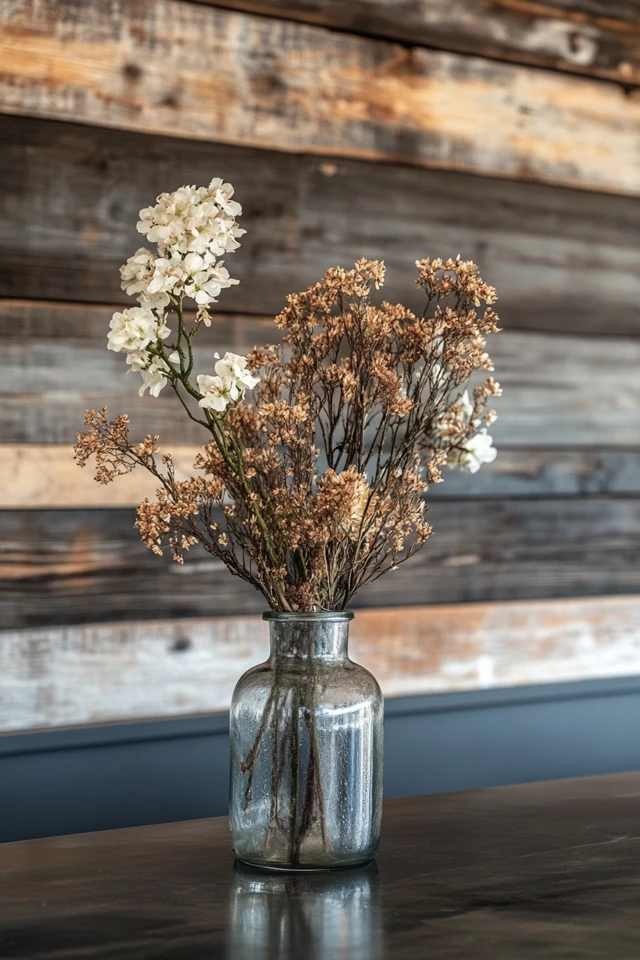
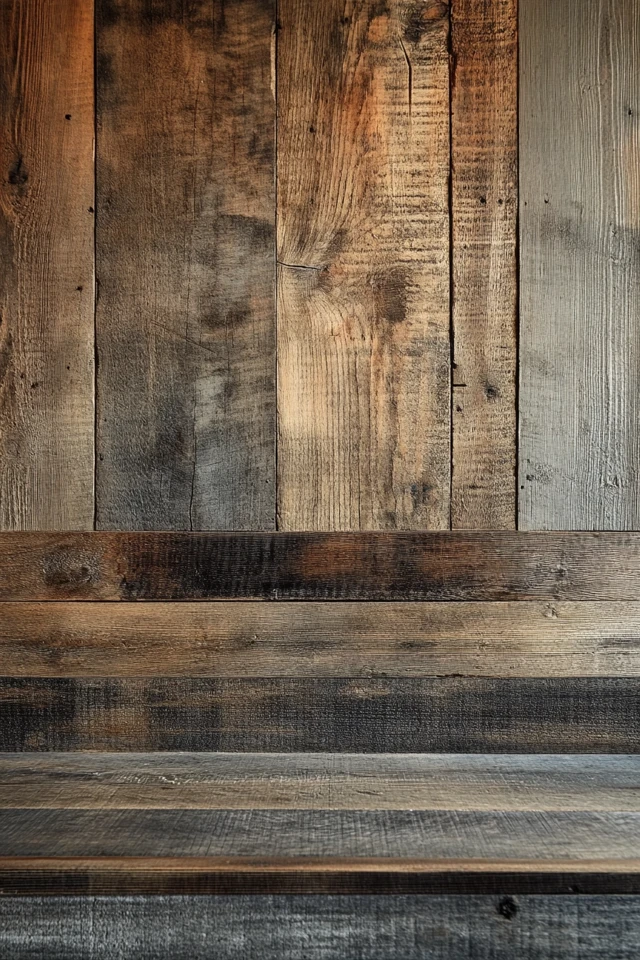
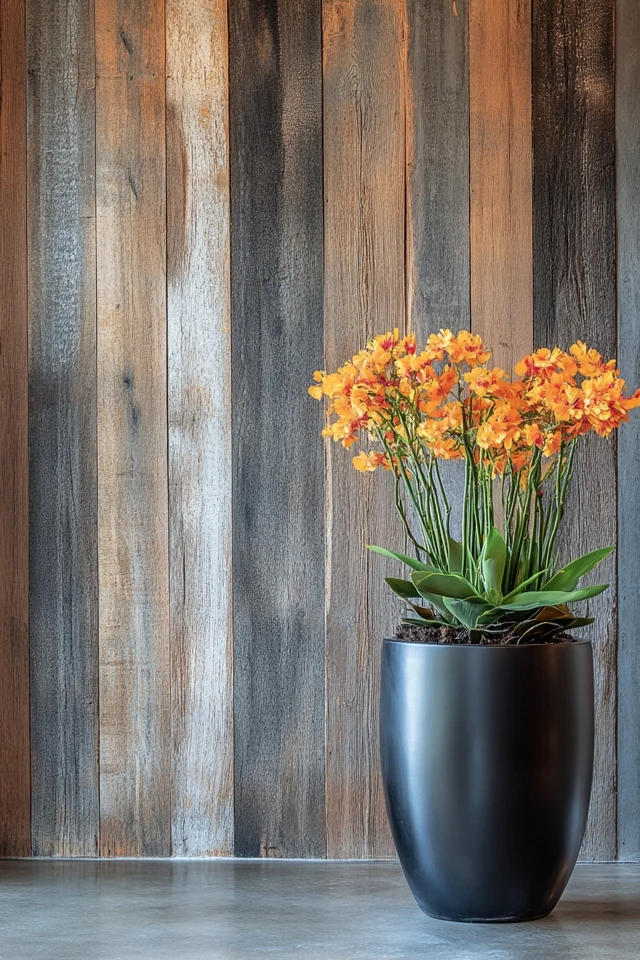
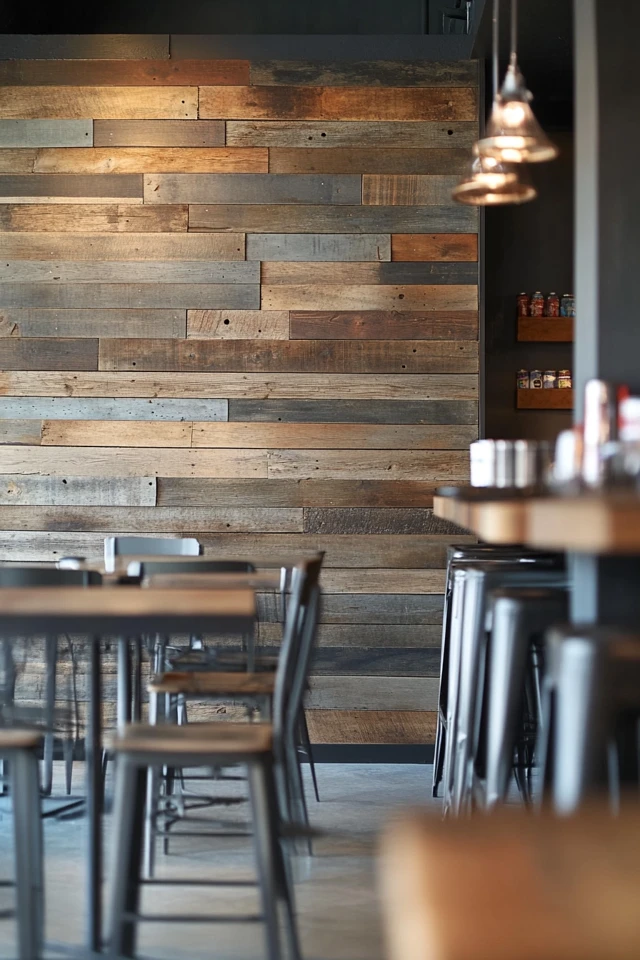
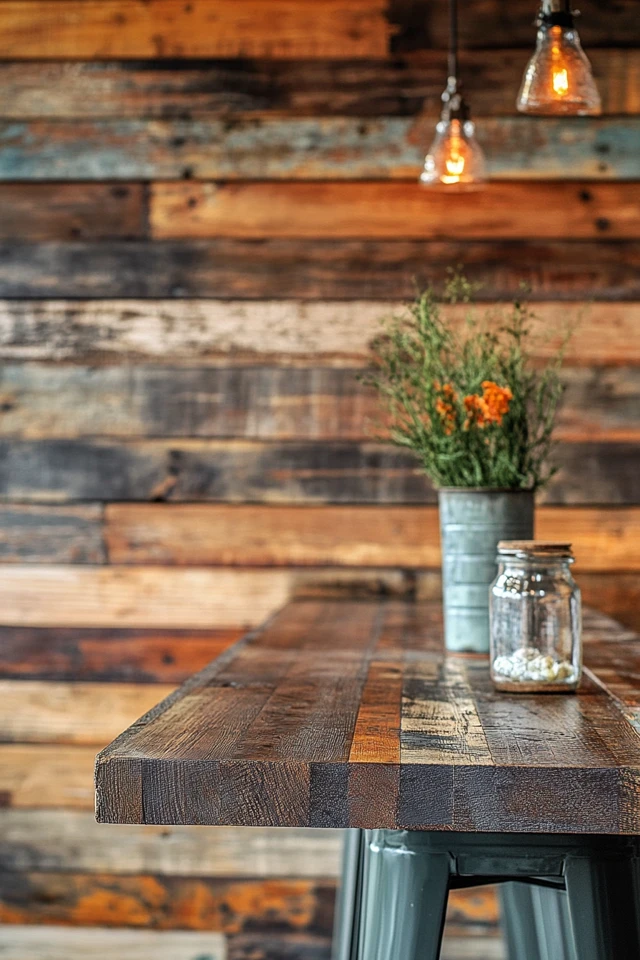
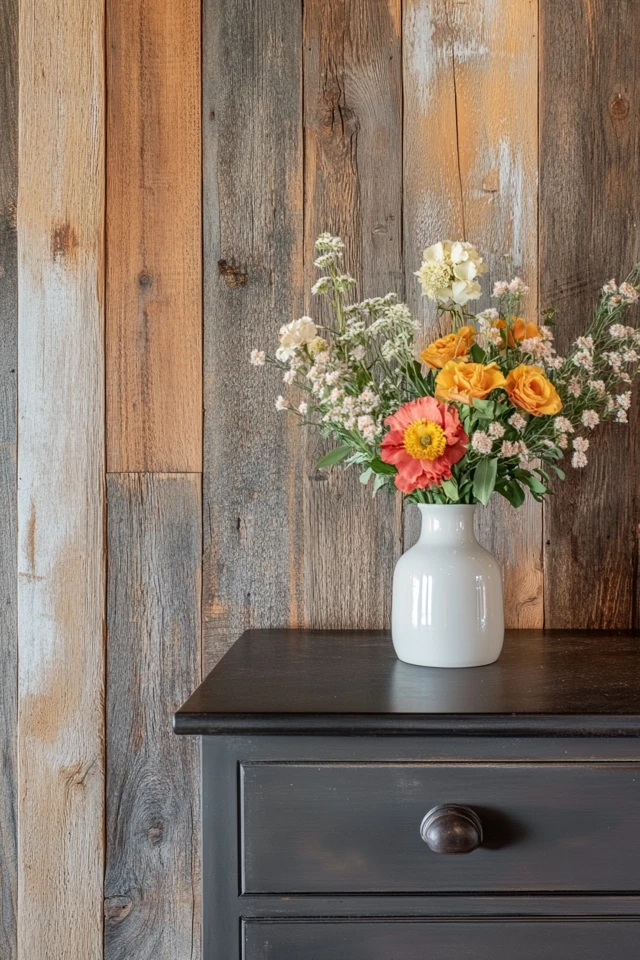
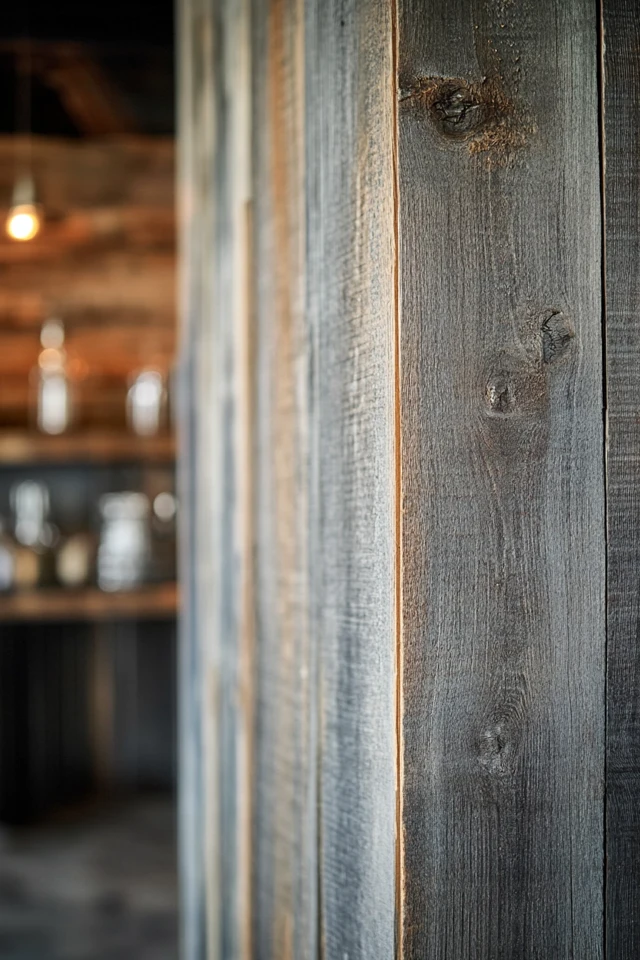
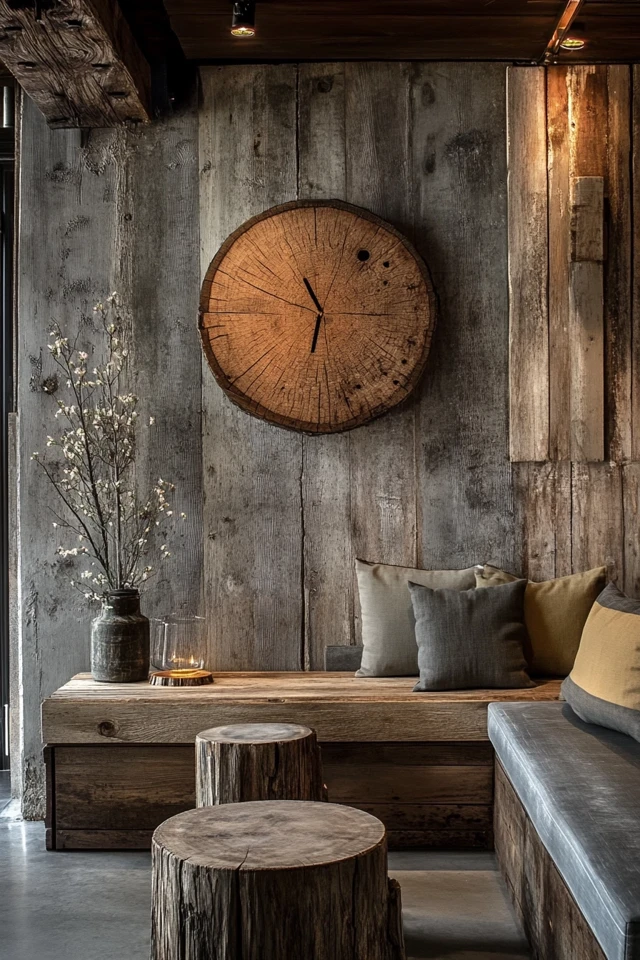
Tips for Choosing and Using Reclaimed Wood
1. Source Responsibly
Make sure your reclaimed wood is sourced responsibly. Look for suppliers that salvage wood from old barns, factories, or shipping pallets, ensuring it’s been treated and cleaned properly.
2. Embrace Imperfections
Knots, cracks, and nail holes are part of what makes reclaimed wood special. Embrace these imperfections—they add authenticity and character to your design.
3. Seal and Protect
To ensure the longevity of reclaimed wood, seal it with a protective finish. This not only preserves its natural beauty but also makes it easier to clean and maintain.
4. Combine Light and Dark Woods
Mixing different tones of reclaimed wood can add depth and dimension to your space. For instance, a light wood feature wall can be complemented by darker wood furniture.
5. Use Sparingly for Impact
You don’t need to go overboard with reclaimed wood. Sometimes, a single statement piece—like a reclaimed wood headboard or coffee table—is enough to achieve the desired look.
Conclusion
Reclaimed wood is more than just a material—it’s a way to bring history, sustainability, and beauty into your home. When paired with industrial design elements, it creates a harmonious blend of rugged and refined, offering a space that feels both modern and timeless.
Every piece of reclaimed wood has a story to tell, and when you incorporate it into your décor, you’re adding layers of character and meaning to your space. Whether it’s a feature wall, a dining table, or a set of shelves, these pieces bring warmth and authenticity to the raw edges of industrial design.
In my own projects, I’ve seen how reclaimed wood transforms spaces, adding a sense of depth and soul that’s hard to achieve with new materials. It’s a reminder of the beauty of imperfection and the value of craftsmanship.
So, if you’re looking to create a rustic industrial look in your home, start with reclaimed wood. It’s not just a design choice—it’s a statement of sustainability, history, and style. And trust me, the results will be nothing short of stunning.
FAQ
1. What is reclaimed wood, and where does it come from?
Reclaimed wood is salvaged from old structures like barns, factories, and shipping pallets. It’s cleaned, treated, and repurposed for use in furniture, flooring, and décor.
2. How can I ensure the reclaimed wood I use is safe?
Work with reputable suppliers who clean and treat the wood to remove pests, toxins, or contaminants. Always ask about the wood’s origin and treatment process.
3. Can reclaimed wood be used in modern industrial spaces?
Absolutely! The warmth of reclaimed wood contrasts beautifully with sleek, modern industrial elements like concrete, steel, and glass.
4. Is reclaimed wood durable?
Yes, reclaimed wood is often more durable than new wood because it has already aged and hardened over time. Proper sealing and maintenance will ensure its longevity.
5. What are some budget-friendly ways to use reclaimed wood?
Start small with accents like shelves, picture frames, or a coffee table. You can also source wood from local salvage yards or DIY projects using shipping pallets.

